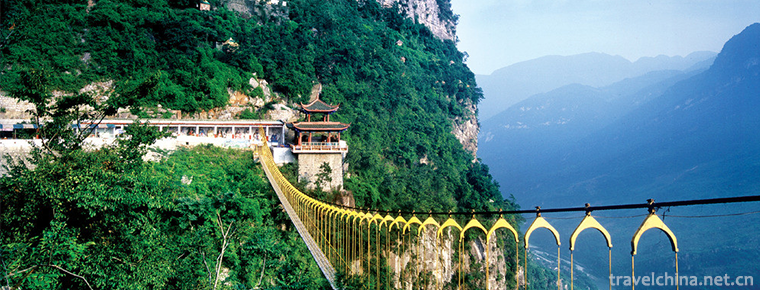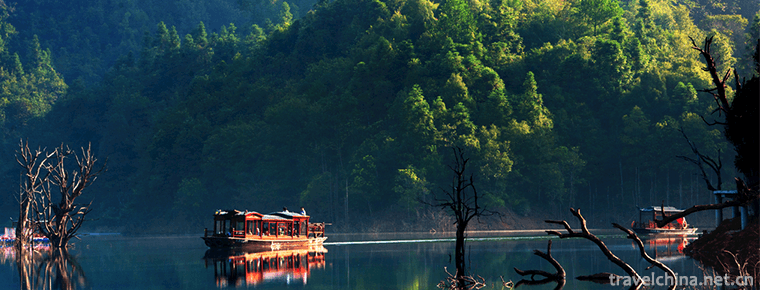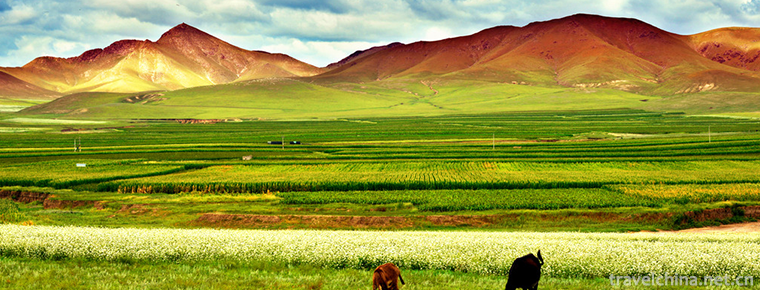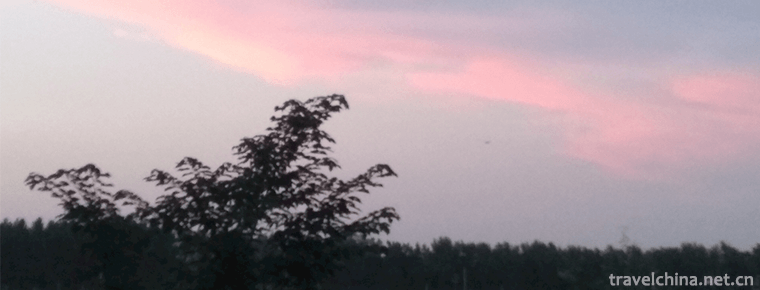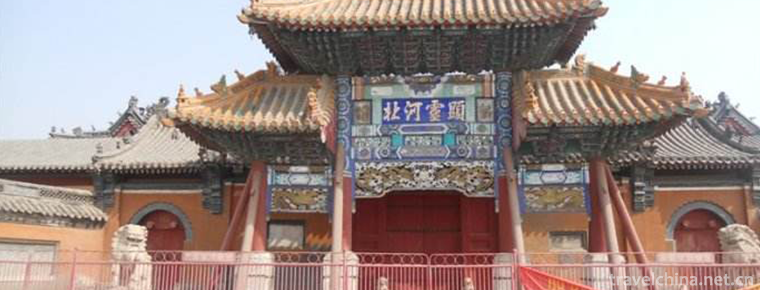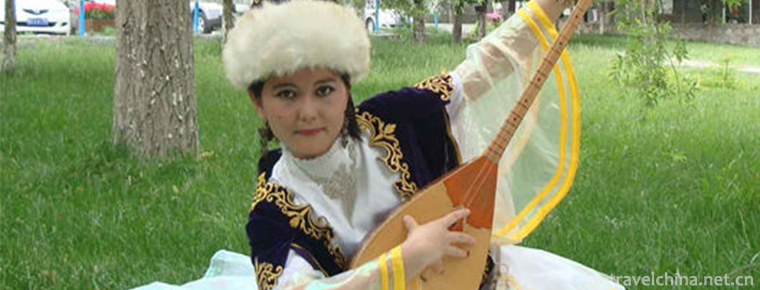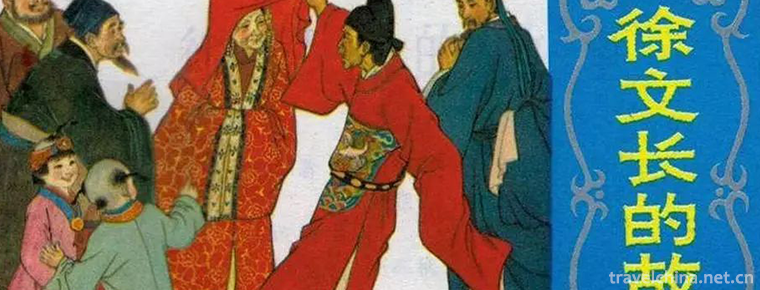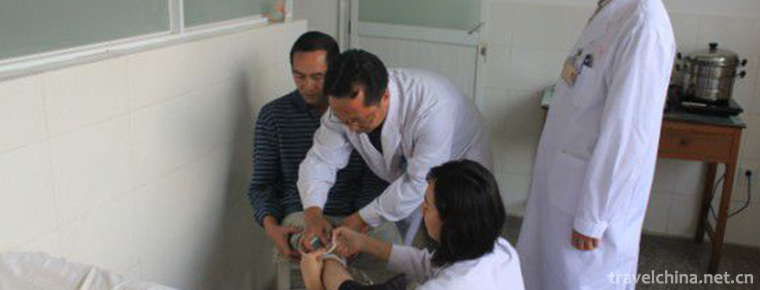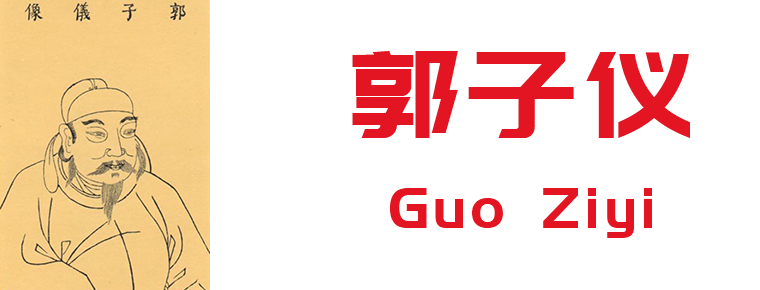Quanfeng Lantern
Quanfeng Lantern
Quanfeng Lantern is a traditional folk art form in Quanfeng Town, Xiushui, Jiangxi Province. It is an artistic performance activity between lamp, opera and dance. Its main feature is the performance of the lamp troupe, which has a strong folk color. During the Spring Festival, all kinds of lanterns gather in the countryside, from the first light to the Lantern Festival, running from home to home, singing all night. In addition, folk festivals, birthday celebrations, bridges and weddings, all invite lanterns for a lively time.
On May 20, 2006, Quanfeng Lantern Festival was approved by the State Council and listed in the first batch of national intangible cultural heritage list.
Festival History
Quanfeng Town is located in the northwest border of Xiushui. Quanfeng lanterns originated in Quanfeng Town, radiating the countryside. Quanfeng Flower Lantern belongs to Jiangxi Quyi, which is popular in Tangcheng and Quanfeng townships under Mufu Mountain in the northwest of Xiushui. In Qianlong's Annals of Yining Prefecture, the Qing Dynasty, it was recorded that there were many kinds of Chu in Fenning (now Xiushui) boundary between Wu and Chu. Citizens in urban villages and villages still follow the old ways and specialize in witch prayer. Witchcraft and Taoist activities are very popular in this area. According to legend, Quanfeng Flower Lantern Tune is derived from Taoist music. Comparing the Flower Lantern "Xia Nan Jing" with Taoist "Song Jing", the two tunes have the same melodic style, and the sentence structure is both upper and lower rhymes and five syllables.
The legend of Quanfeng Lantern is also very legendary. About a long time ago, Cao Zongzhe, a Mr. Yin and Yang, saw the Longquan section behind Quanfeng Township. The mountains were lofty, rolling and rolling, like a dragon. So he came here with his brother Cao Dingji to start his career, and built a house and a tree base between the two wells to reproduce his descendants. His grandson Cao Xiping has twelve sons, all singing lanterns, known as the "nine Huqin", thriving for a while.
Quanfeng Lantern is a special product of Quanfeng. The lanterns called "the second half of the opera" by the local people are not only different from the local popular "the first half of the opera" (Ninghe opera), but also different from the folk songs in other places.
Quanfeng lanterns are usually festivals and festive activities, especially the Spring Festival. All kinds of lanterns are gathered in the countryside. They sing from the first lantern to the Lantern Festival, run from home to home, and stay up all night. Besides the Spring Festival, folk festivals, birthday-making, classes, marriages and married women all invite lanterns.
Have a good time. Quanfeng Town has more than 20 Flower Lantern teams, there are five near the town seat, there are gongs and drums, clothing, props and other equipment. More than 1200 people in Longquan section can sing lanterns, 70% of them are living Cao Zemin, and three generations of ancestors all sing lanterns. The performance on festival lanterns, first of all, should choose the lantern sticker to inform the other party, when leaving, the book has "Celebration * Entertainment lanterns" sign opening, all the way colored lights shine, gongs and drums are noisy. They are active in remote areas and can be performed at any time and anywhere. They are popular with people in mountainous areas.
Quanfeng lantern production and singing form, there are three lines of life, dan, ugly. Bean curd block with ugly face, silk in hand, handlebars in hand, trembling Ana state; with hat glasses, eyebrows painted with white lines, riding a horse (bamboo tied paper) whip, when funny with the danjiao, three people walk round the field, while performing. Four long hexagonal lanterns with flower patterns are standing around the court. There are many kinds of lanterns. The common ones are Boli lantern, car lamp, egret lamp, Neiza "monkey jumping circle", "Xiangu pushing mill", "Eight Immortals crossing the sea", and other images. The white crane lantern is also among the bands, which symbolizes auspiciousness and auspicious celebration, and a rich life. Every year on New Year's Day, drums and lanterns start to light up until the Lantern Festival. Street lamp teams gather in all directions, candlelight continues to shine and song reaches the dawn. Before entering the village, the lamp squad sends the lamp sticker to inform the other party. On departure, the book has the sign "Celebrating XX Entertainment Lantern". Along the way, the guide is brilliant. The men and women gather together. The villagers are happy to welcome and send them off. Some of them use cake candles to go up the beam.
When making a house, please also invite lanterns for fun. Flower lantern repertoire, all have simple plot. Although it is a single story, a series of performances form a set of stories. There are "Nanjing" (including "Taking Goods" and "Six Months of Flowering"); New Year's Worship, Ring Hoop, and "Ten Months of Flowering and Other Langs"; Sister-picking and Drinking, Affection and Reverse Sentiment; Couple's Sentiment, Xiamacheng; October Lotus, Ten Months of Spring Flowers, Chanting Flowers and Spring Flowers.《 Twelve Months Flowers); Twelve Months Flower Collection produced by labor; and Blessing Naji's "Junction of the Top Scholars", "October Pregnancy" and so on.
During the Agrarian Revolution, the Soviet government of Xiushui County established a disguised speech troupe in 1930 to sing operas, singing and dancing, and lantern tunes. It used Quanfeng lantern "Twelve Months Flower" to compose the "Twelve Months Revolutionary Song" to publicize the revolution and propaganda policies, which was widely spread in the border areas of Hunan, Hubei and Jiangxi. Since the founding of the People's Republic of China, Quanfeng Lantern has made great progress. In the 1960s, in line with the central work of the Party, the cadres of the County Cultural Museum created a small Song "The sun shines on the cliff" to celebrate the harvest of agriculture, which won the program prize at the Jiujiang Literature and Art Festival. In 1979, in order to explore folk art, the County Cultural Museum made recordings and re-rehearsals. Among them, traditional lantern tunes such as "Ten Belts of Goods", "Six Months of Flowers", "Lower Nanjing", "Ten Months of Spring Flowers" were awarded excellent programs at Jiujiang Civic Song Concert. Actors Ding Laiwen and Ding Mingsheng were awarded by the General Assembly. Now there are more than 20 groups of flower lantern teams in Quanfeng and Tangcheng. There are gongs and drums, clothes and props in Longpu section, Yellow River section, Green Wood, Huangpaochong, Shangshuping, Shangyuan village, etc., playing, playing and singing, and there are many talented people. The youngest actor is sixteen years old and the elder is over seventy years old. Only 1,200 people in one village of Longquan section, that is, 70% of farmers can sing lanterns. Some three generations of the family, such as Cao Zemin (Shengxing, born in 1947), are masters of lanterns. Flower lantern artists of past dynasties include Cao Ganmin (born in 1890), Cao Hanlin (born in 1893), Cao Chengdu (born in 1929), Cao Liqun (born in 1923), Dai Lixuan (born in 1907), Hu Chengjian (born in 1921), Hu Chengyi (born in 1958) and Hu Jingxian (born in 1959).
Festival activities
Major activities
Quanfeng lanterns are active in remote areas, high mountains and dense forests. Every night of traditional festivals, lanterns will come unexpectedly, along the way, colored lights waving, gongs and drums are noisy, spectacular. Lanterns can be performed anytime, anywhere, to celebrate the Lantern Festival in Mountainous Areas
People like it. Everywhere they go, the mountain people welcome firecrackers, serve tea, and congratulate each other with their voices and wishes, which are sent to millions of families in the night wind.
Form of activity
Quanfeng Lantern, also known as "the second half of the opera", uses authentic Quanfeng dialect in Xixiang, which is not only different from Xiushui's popular "the first half of the opera" (Ninghe opera), but also different from other folk songs. Some foreign artists who sing lanterns go to the villages adjacent to Quanfeng to inquire about it. They all say they don't know what songs Quanfeng lanterns sing, but they have a unique style. Quanfeng lantern opening content is mostly impromptu rhetoric, instrumental music is mainly percussion, such as Yungong, gong, drum, cymbal, and sometimes accompanied by Huqin, flute, Suona. The opening, prelude and interval rhythm are the same, and the lyrics are mostly used with "hoo" and "hoo".
Activity content
The tune of Quanfeng Fenghua Lantern is "Lantern Song", mostly in mono-structure. A single song, the name of the melody is the name of the track, dedicated to the song. Most of the modes are symbols and feathers, followed by quotients and angles. Special emphasis is laid on the five levels above the main sound, which is closely combined with Quanfeng dialect. During the performance, percussion instruments are the main instruments, Yungong, gong, drum and cymbal are played in concert, while Huqin, flute and Suona are combined in the singing tune. There are many interlining words, interlining words and interlining words in the lyrics. Almost every sentence has interlining words, such as, ah, bar, ho, ho, ho, ho, ho, Ho and so on. Its lining sentences, such as "Lotus Mile", "Youzimei", "Peony Flower" play the role of sentence connection, sentence expansion and sentence end supplement in the tune. Lining words and sentences embellish and render the melody for the lamp tune and embellish the tone, which enhances the strong artistic appeal.
There are eight lanterns in Quanfeng (also called pot lanterns). The lamp maker has eight kinds of special effects. They are known as: sister-in-law's grinding, rat offending Liang, Liu Hai playboat, monkey beating, Rengui shooting carving, sisters watching flowers, Dongbin backing sword, Zhang Sandahu, all of which are playing performances.
Festival lanterns on-site performance, first of all to send "light stickers" to inform each other. On departure, the book has the sign "Celebrating the entertainment lantern of somebody", with colorful lights shining all the way, gongs and drums roaring in the sky.
Current situation of inheritance
Flower lantern teams are active in remote areas, high mountains and dense forests, not stage, curtain, fields, grasslands, halls, courtyards, can be performed at any time, anywhere, for the joy of the mountain masses, to send a peaceful and happy atmosphere to the mountain people. Quanfeng Town has more than 20 lantern teams, the most active are Tangcheng Street (where the town is located), Longquan Section, Huangsha Section, Mung Bean Wood, Huangpao Chong, Shangshuping, Shangyuan and other places. Every lantern team has gongs, drums, clothing, props and other equipment. The youngest actors are 16 years old and the elder are more than 70 years old. They all have certain singing and performing abilities. Longquan section more than 1,200 people, 70% of the people can sing lanterns, visible popularity. Today, Cao Zemin, the main inheritor, sang lanterns for three generations.
The State attaches great importance to the protection of intangible cultural heritage. On May 20, 2006, the folklore was approved by the State Council and listed in the first batch of national intangible cultural heritage lists.
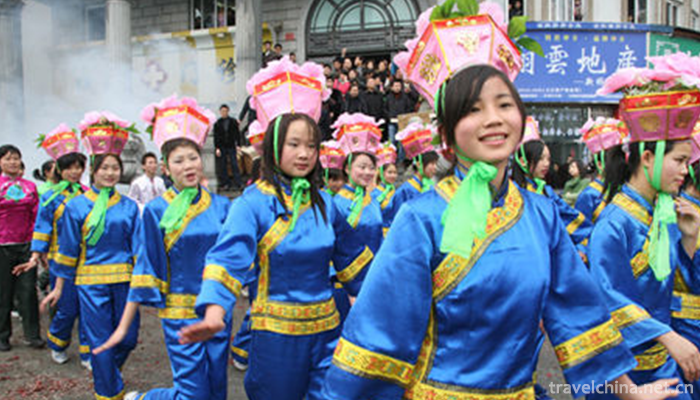
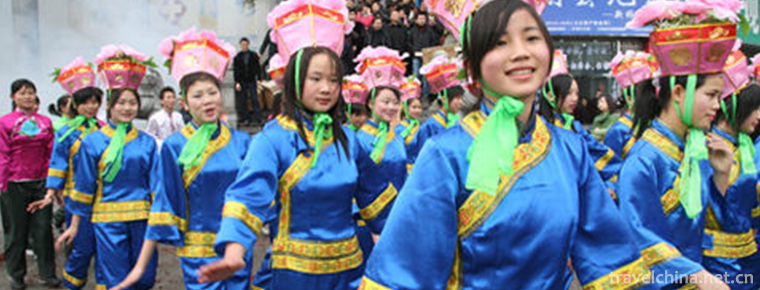
Quanfeng Lantern
-
Jiuhuangshan Ape King Cave Scenic Area
Jiuhuangshan Ape King Cave Scenic Area, located in Beichuan Qiang Autonomous County of Mianyang, Sichuan Province, is the largest karst cave in southwest China and a famous tourist cave in Western Chi
Views: 158 Time 2018-12-22 -
Kowloon Lake Resort
Guangzhou Jiulong Lake Resort is a national AAAA-level tourist attraction with an area of 25,000 mu. The resort takes natural landscape as its broad carrier and family vacation as its leading function
Views: 186 Time 2018-12-22 -
Bayinbrook Grassland Scenic Area
Bayinbrook grassland: formerly known as Yuledus grassland, Zhuledus grassland, Yuludus grassland, because it is mainly located in Xinjiang Bayinguoling Mongolian Autonomous Prefecture
Views: 126 Time 2019-01-02 -
Lao Leshan Tourist Scenic Spot
Lao Leshan is located in the south of Henan Province, 9 kilometers southwest of Zhumadian City and 8 kilometers west of Queshan County. National Highway 107
Views: 155 Time 2019-01-29 -
Anguo City
Anguo City, formerly known as Qizhou, is now the jurisdiction area of Baoding City, Hebei Province, 100 kilometers south of Shijiazhuang, the provincial capital.
Views: 294 Time 2019-03-30 -
Kazakhstan 62 Kwohner
Kazakhstan 62 Kwohner 62 Kwohner is Kazakh folk classical music, which means "62 suites". It is a comprehensive art mainly composed of instrumental music, accompanied by folk songs, dances,
Views: 220 Time 2019-05-02 -
Xu Wenchangs Story
The story of Xu Wenchang takes the history of the middle and late Ming Dynasty as the background. From the legend story of Xu Wenchang's youth, "Taking things from the pole", it has been tol
Views: 163 Time 2019-07-09 -
Yi Medicine Water Plaster Therapy of Yi Medicine
Yi medicine is the summary and wisdom crystallization of the Yi people's long-term struggle against disease, and it is an important part of the great treasure house of Chinese medicine. There are thou
Views: 229 Time 2019-07-12 -
Guo Ziyi
Guo Ziyi (697 - 781 years), Zi Zi Yi, Iowa Zheng county (now Shaanxi) Weinan city Hua Zhou District ) People. The famous Tang Dynasty Politician , Militarist
Views: 270 Time 2019-09-07 -
Lingshan Temple
Lingshan temple is located in Mianning County, Liangshan Prefecture, Sichuan Province. It is 8 km away from Mianning County. It is the most famous temple in Liangshan Prefecture. It belongs to Mianning County as well as Xichang Satellite Launch Center.
Views: 191 Time 2020-10-16 -
Deyang science and technology
In 2018, Deyang City won 141 provincial projects, including 108 provincial science and technology plan projects and 33 Provincial Intellectual property projects. There are 32 provincial patent implementation projects. 184 high-tech enterprises. A total of
Views: 165 Time 2020-12-14 -
Nanchong science and technology
In 2019, Nanchong implemented 97 key science and technology plan projects, an increase of 7.8% over that in 2018, including 83 national and provincial science and technology plan projects. It won 11 provincial science and technology progress awards. In the whole year
Views: 158 Time 2020-12-17
